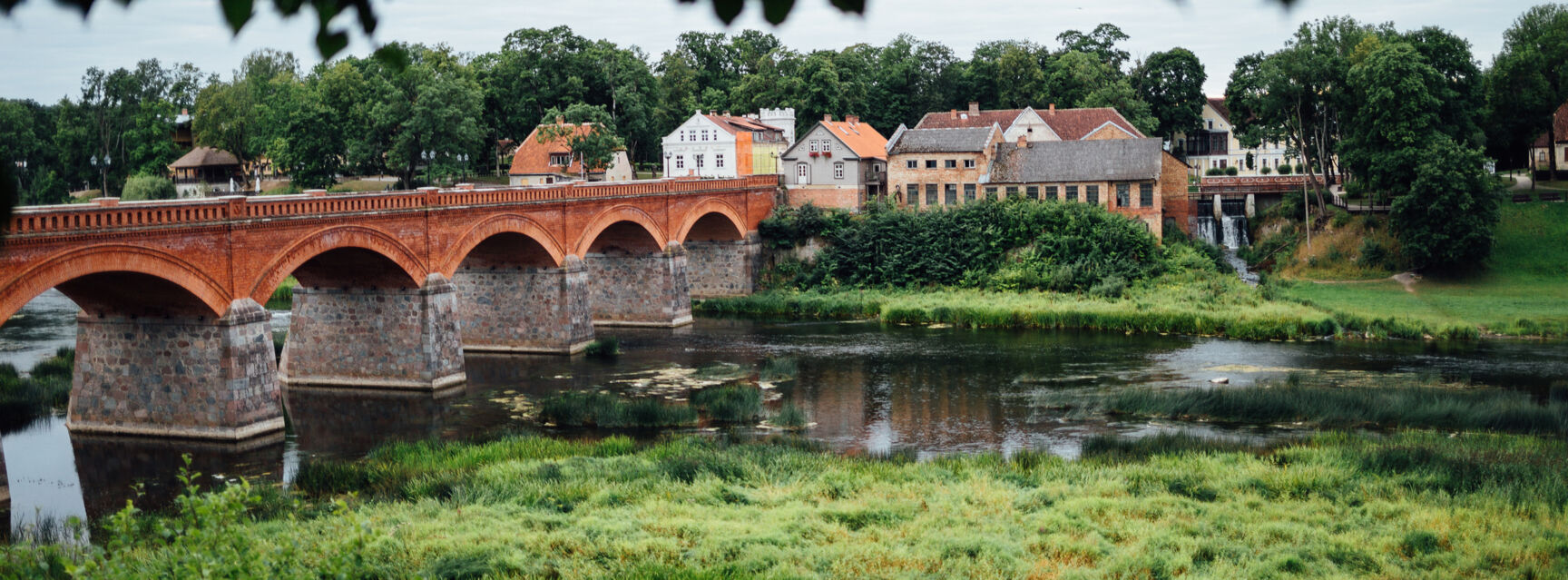Facts & Figures
Founded
Year 1355
Location
56.96859 latitude and 21.96067 longitude
Population
10497
UNESCO World Heritage
Yes, Kuldīga´s Old Town, since 2023
What is the city known for?
Ventas rumba, the widest natural waterfall (240 m) in Europe

Kuldīga was first mentioned in 1368 as a member of the Hanseatic League. Kuldīga can be grateful for its importance in Hanseatic trade mainly to the Venta River, which provided the most convenient transportation of goods from the port of Ventspils to the inland areas at that time. Until recently, land roads were often in very poor condition, and land transport was slow, unsafe and expensive. Therefore, the location by the waterway provided Kuldīga with an opportunity to engage in Hanseatic trade. In addition, the Rumba waterfall was an insurmountable barrier for boats, so goods had to be reloaded in Kuldīga and this “forced” mediation provided the town with an active commercial life. Local products were brought to the town by land from the surrounding area: corn, flax, hemp, wax, honey, etc., which traders could then transport to Ventspils by river, reload in suitable ships and export to Western Europe. Western European goods destined for the domestic market were transported in the opposite direction: fabrics, salt, salted fish, which were so important in the Middle Ages for their religious beliefs, from the Swedish coast or the North Sea; later also luxury (wines, precious stones) and colonial goods (spices).
Year 1355
56.96859 latitude and 21.96067 longitude
10497
Yes, Kuldīga´s Old Town, since 2023
Ventas rumba, the widest natural waterfall (240 m) in Europe